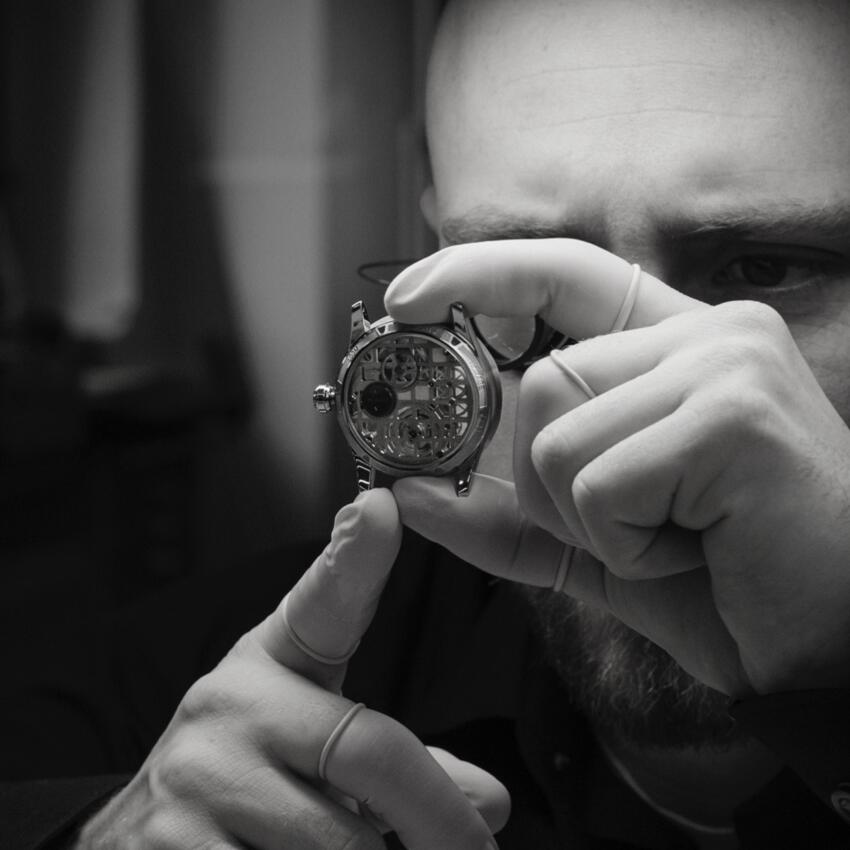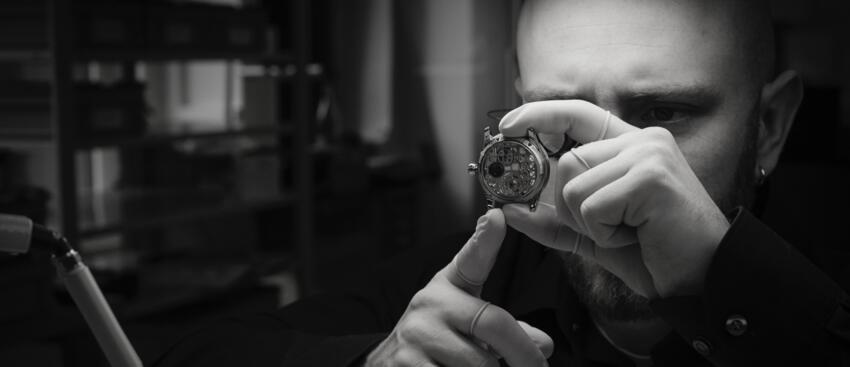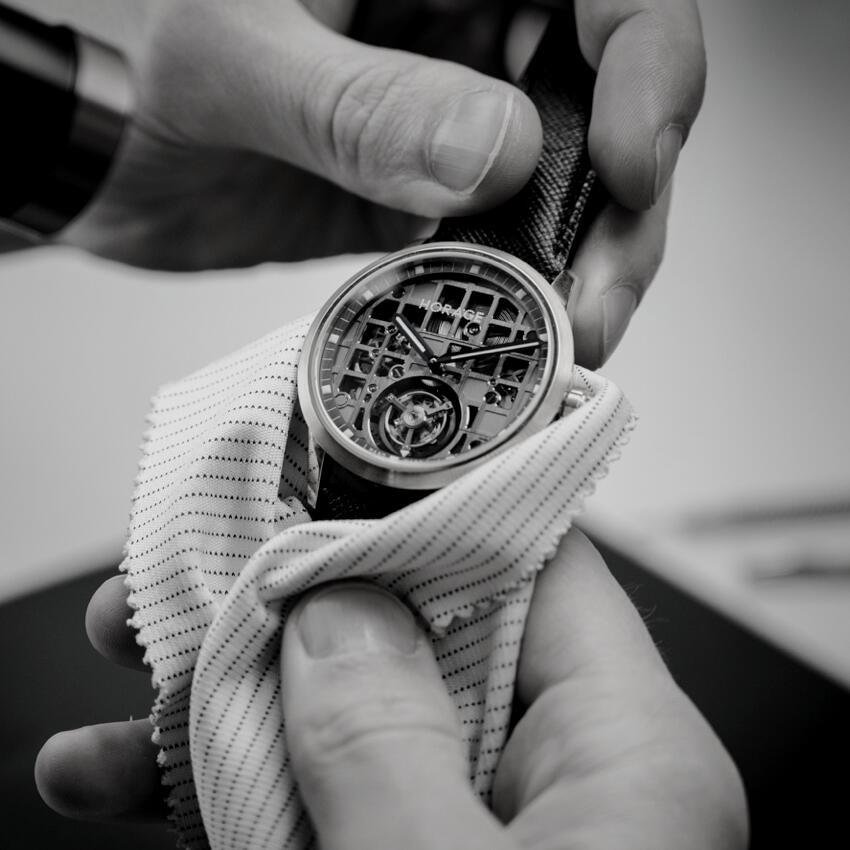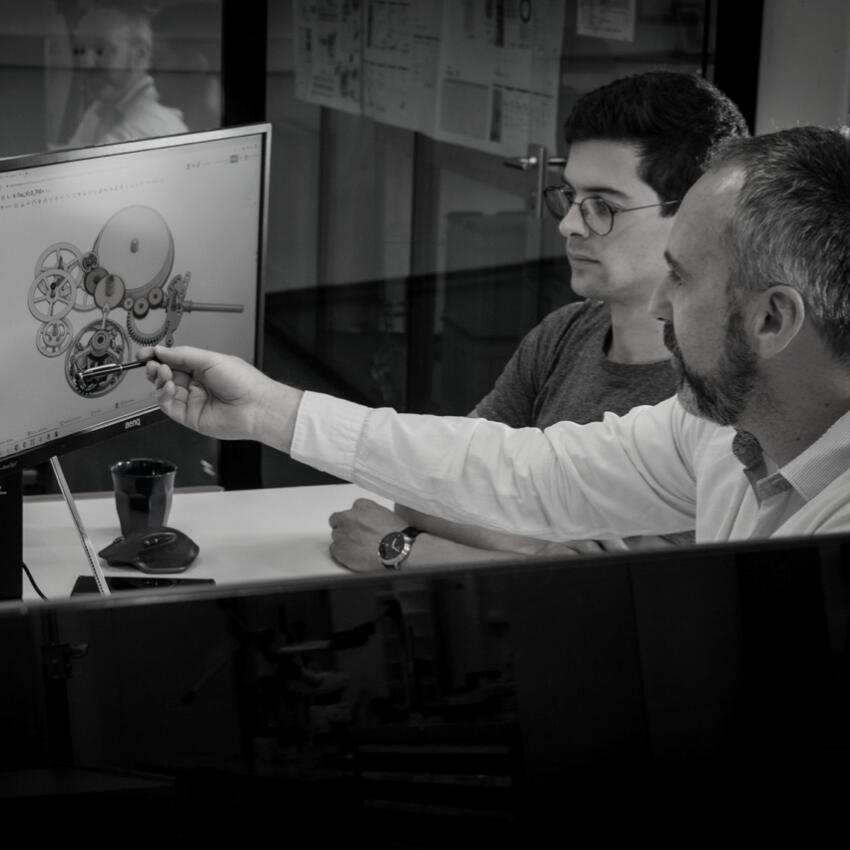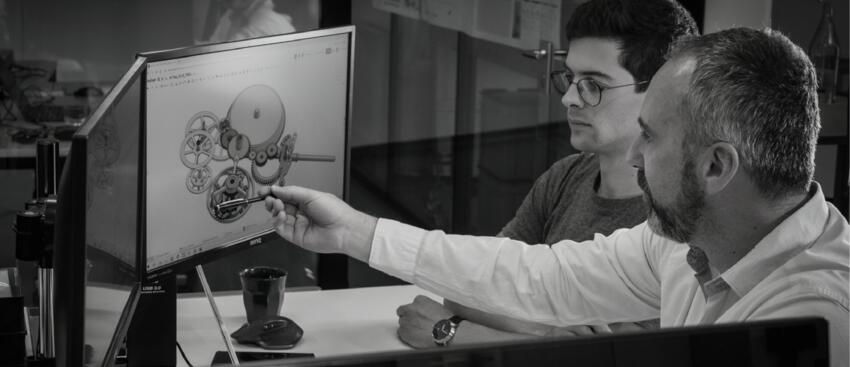At the dawn of the 16th century, the first mechanical “watch” was created by Peter Henlein in Germany, a primitive device that was more of a portable clock worn around the neck. The watchmaking game has matured considerably in the five centuries since, yet remains a difficult and specialized discipline. HORAGE has a team of highly educated and eminently qualified engineers and horologists that give a nod to the past and etch out new performance developments for 21st century design and production.
PERFORMANCE WATCHMAKING
It’s not difficult to purchase movements and encase them with fancy dials (and call them your own). Designing and engineering a movement from scratch is another animal entirely and requires both a financial investment and one in top watchmaking talent. Movement production is a multi-year commitment, requiring 3-5 years for a new manufacture movement and 7-10 years for a high performance production movement like our K1, K2 or tourbillon calibres. After a watchmaking team has successfully produced a movement, either a manufacture or larger scale, they can start shaving a few years off of the timeline. Part of the initial investment is trial and error, understanding what works and what doesn’t, and learning how to optimize through failure.
Like a beating heart, mechanical movements must be perfectly engineered and without faults. Watchmaking is an unforgiving venture that requires a significant investment in time, talent and patience, but the reward is a new autonomous work of art that measures one of the most fundamental aspects of life – time.
From Manufacture to Industrial and Beyond
What is the difference between a manufacture and industrial movement? There have basically been two sides to look at. Manufacture movements are known for nostalgic, beautiful and intricate decorations that can offer a multitude of complications, but generally sacrifice reliability and performance. Industrialized movements are designed to be workhorses with less flexibility for complications and they're often less aesthetically pleasing, but if executed correctly can perform quite well. The latter, of course, benefits from a larger scale of production.
Performance Watchmaking
Florian Serex, a creative development partner, positioned our K1 automatic as a bridge between the two worlds of manufacture and industrial to carve out what we call performance calibres. We sought to develop a very reliable and efficient movement built on higher production and performance standards, while simultaneously providing both flexibility with complications and refined decorations. K1 was the first to do this, having a modular design that offered 18 base variations with 5 complications – small seconds, big date, small date, power reserve and 3-hand setup. The K2 micro-rotor took things further by delivering even more power reserve in thinner, more compact base profiles of 2.9, 3.3mm and 3.6mm that deliver a staggering 38 variations. The icing on the cake is taking the best of K1 and K2 and combining them with a tourbillon cage. Add in silicon escapements, COSC accuracy, exacting tolerances and state-of-the-art engineering with materials from the best suppliers in the industry, and it all culminates into a super car on your wrist. You can call us a performance watchmaker.
OUR PRODUCTION TEAM
Engineering, R&D, machining and assembly occurs at our facility in Biel/Bienne Switzerland and it’s where all of the watchmaking magic happens. The team is lean, ultra-efficient and extremely innovative, which allows us to design and engineer entire watches, from movements to finished products and for less than the competition. A small but expanding team – Jonas, Silvan, Lenny, Laurent, Florian, Antoine, Pascal and Markus – are capable of producing more than 3,000 K1 movements per year and simultaneously work on future movement developments. Larger brands and groups often reach out to our team for project support as well, so there is never a dull moment.
HORAGE differs from competitors as we not only engineer all of our movements, but also design our watches complete with assembly starting at T0. This is a critical point in assembly and one that’s often outsourced by major brands to 3rd parties. What does T0 mean? Jewels and other small parts that are typically preassembled from parts suppliers are all assembled by our watchmaking team. We have invested heavily in specialized equipment and own tooling for T0 assembly to ensure that movement production meets our most stringent quality control standards. Customers always know that the entire assembly of their watch happens at our facility in Biel/Bienne, Switzerland.
